Do you find that sometimes your art heads in a very tight, neat, controlled direction without you either wanting it to or even apparently being able to stop it? And what you really actually want is to loosen up your art, not paint yourself into a corner?
I do. And if I do, then I know I’m not the only one.
So if this is something you experience too, behold a list of things you can do to loosen up and make more expressive, energetic, dynamic art. These are things I either do myself or am going to try out; some are practical, some more conceptual. I can only imagine what kind of wild and free painting would happen if someone used them all!
What’s more, I’ve created a lovely free printable for you so you can stick it up in your creative space or slip it into your sketchbook for easy reference.
begin with an intention
From something as simple as announcing ‘today I am painting loosely’ to a written statement you put up near where you’re working, consider ‘starting as you mean to go on’. You could even paint it onto your canvas as a starting point!
set the scene for freedom – loose clothing, drop cloths
Painting free and loose can be messy, so prepare the area! Wear loose clothing to permit you to move more freely; restriction is unlikely to encourage wild abandon.
get everything ready before you start
That way you won’t have to stop mid flow because you forgot to get a jar of water for your brushes, or hunt down a certain colour.
choose energetic music
A great way to bring the kind of energy you’re after into the room and your body.
switch off the technology
Request no disturbance for however long you’re planning to paint, turn off the phone, ignore the doorbell {or pick a specific time when you’re unlikely to be interrupted}. Give yourself the best opportunity to get into the flow.
stay conscious
One of the main reasons I end up getting tighter and tighter in my work is when I ‘fall asleep’ and default to easy old habits, forgetting that I can make conscious choices in each moment. Restating your intention from time to time can help you refocus.
paint big
A great way to let loose and keep your marks varied and bold. Connie Hozvicka of Dirty Footprints Studio offers a course in this very thing. That said, many of these ideas can be applied to smaller work or sketchbooks too if you don’t have heaps of space.
put brushes on sticks
Taping brushes to lengths of dowel or bamboo forces you to give up full control of them, leading to unexpected and looser marks.
paint at arm’s length
Pushes you even further from your canvas, whether on an easel or table, and also encourages quick, loose movements of the brush.
use lots of water
Thick paint is not so conducive to painting freely. Even with fluid acrylics water can be added to encourage drips and splatters.
work in short bursts
The longer you’re at the easel, the easier it is to head into a funnel of small details. Shorter bursts keep things fresh and loose.
do several paintings at once
Spreading your attention stops too much focusing on details, and paintings tend to inform each other so you can dance between them as you discover new marks or colour combinations.
don’t go for finished – stop early
Akin to the short bursts idea, stopping yourself before you feel finished can help prevent that funnel effect. You can return to it, but stopping before it’s finished can introduce new ideas about what finished means.
stand up
Allows for more freedom of movement, not to mention dancing to the aforementioned music. I often dance while painting, and find that standing lets me get my whole body involved, which means larger, looser brush strokes.
use your non dominant hand
Even better if you’re not ambidextrous! See how different your art looks when you are in less control of it.
blind contour drawings
One of my favourite ways to keep things loose and interesting. You could do these to warm up, or incorporate them into a painting, bringing an abstract element to recognisable subjects.
scribbling
Let rip like a three year old would! Some of the most beautiful abstract art is created from energetic scribbling. {Think Cy Twombly.}
refer to Emily’ Ball’s book
Drawing and Painting People: A Fresh Approach {aff link} by UK artist Emily Ball is packed with fantastic loosening up exercises to broaden your imagination and release your marks. Don’t feel limited by the subject – the exercises can be used beyond figurative art. This is one of very few art books I truly recommend.
work fast and loose
Speed = loose. Simple as that.
paint over
If you find yourself starting to tighten up, be bold and paint over it with loose, gestural marks. Layers make for richer paintings and letting go is an excellent practice, and not just in the studio. 😉
use larger brushes
A great way to stop yourself getting all detailed and finicky.
squint
Step back from your work and squint to see colour and tone more clearly.
try mark making conversations
A great exercise to encourage diversity of marks – using three or four colours, make brief, gestural marks on top of each other, so that each new one is different from the one before. This can introduce you to new marks and to using them in a loose and expressive way. You can see examples of this here and here.
use apps to reduce detail and enhance colour and tone
There are hundreds of apps now that allow you to edit images. Apps like Dynamic Auto Painter and PicTapGo can be great for simplifying images into larger, looser areas of colour and tone. A reference image in which detail has been reduced can be very handy for keeping you loose, as both a visual aid and a reminder of what you’re aiming for.
Here’s that printable link again.
Phew! If you don’t find something to loosen up your art in that list I’ll be most astonished. Got any further ideas to add? Please share in the comments!
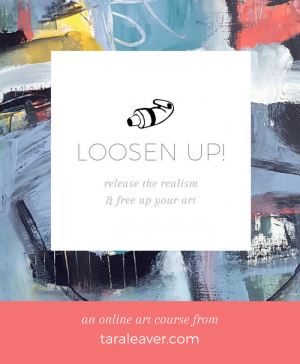 If you’d like to learn to loosen up your art with a bit of extra guidance and {loose!} structure, then Loosen Up might be the course for you.
If you’d like to learn to loosen up your art with a bit of extra guidance and {loose!} structure, then Loosen Up might be the course for you.
It’s packed with experiments to try and ways in to painting, designed to help you free up your art and make paintings that are ever more your own.
You’ll find it alongside lots of other painting courses, a cosy community, and guided monthly themes, inside the Happy Artist Studio!
Click here to learn more and join us!
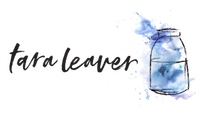
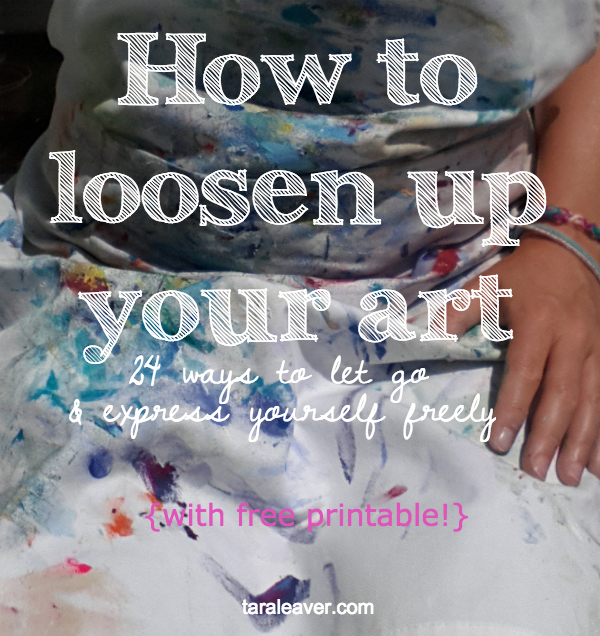
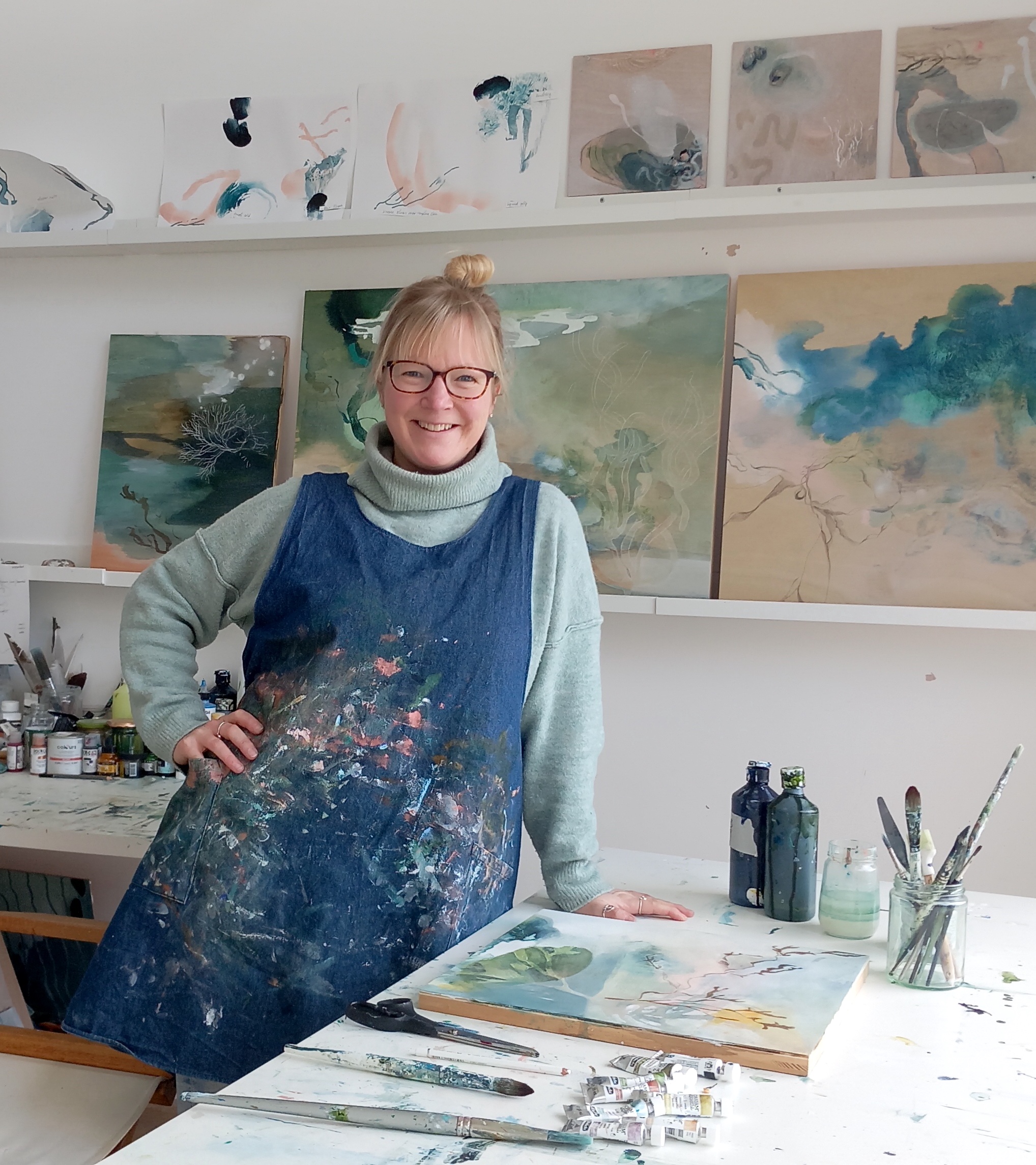
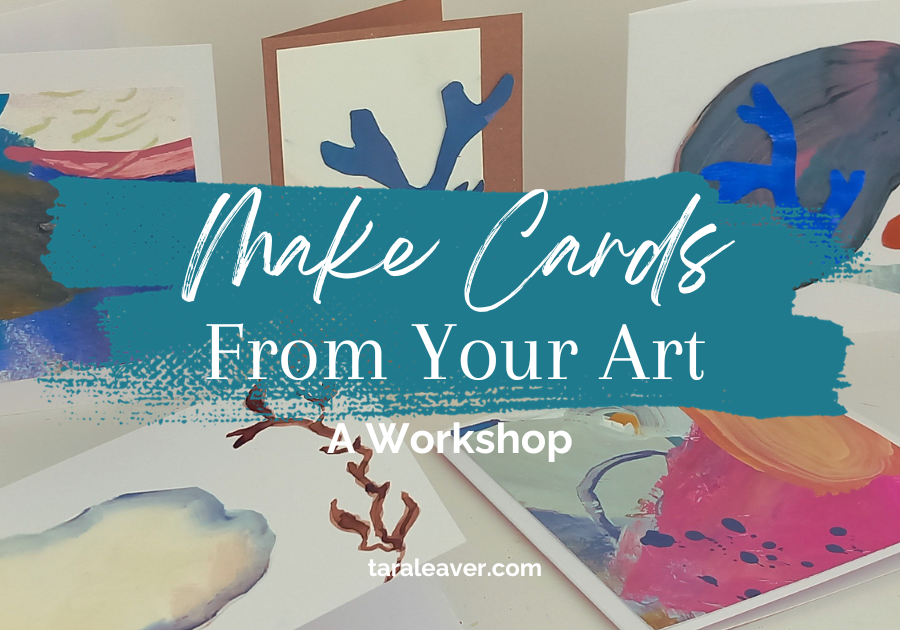
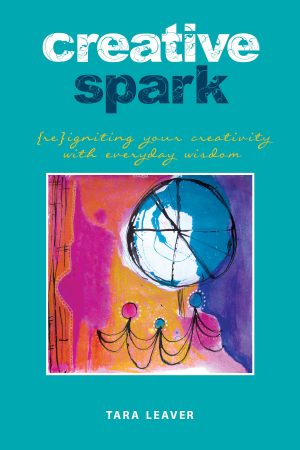
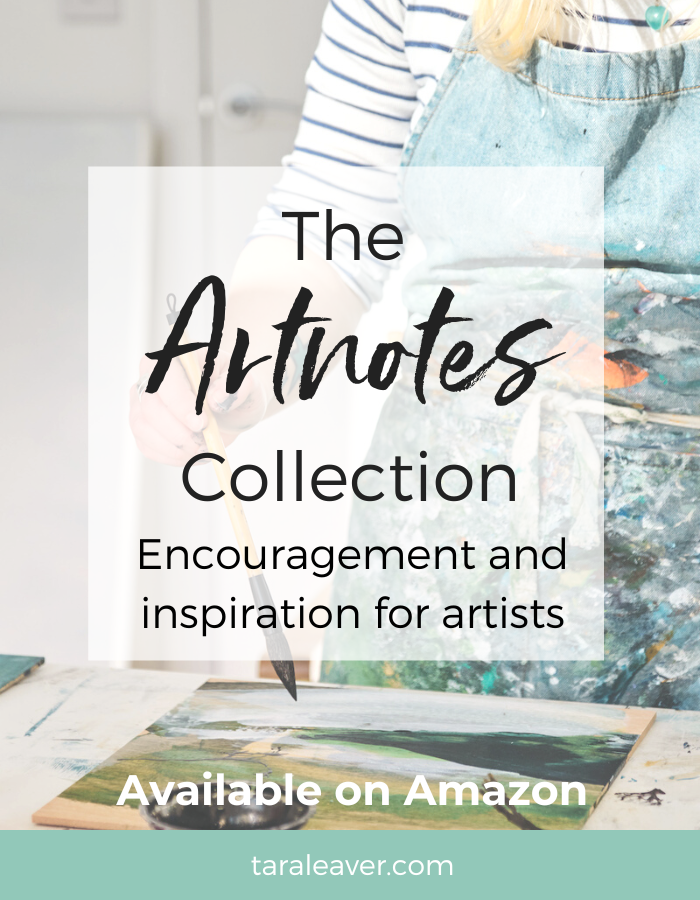
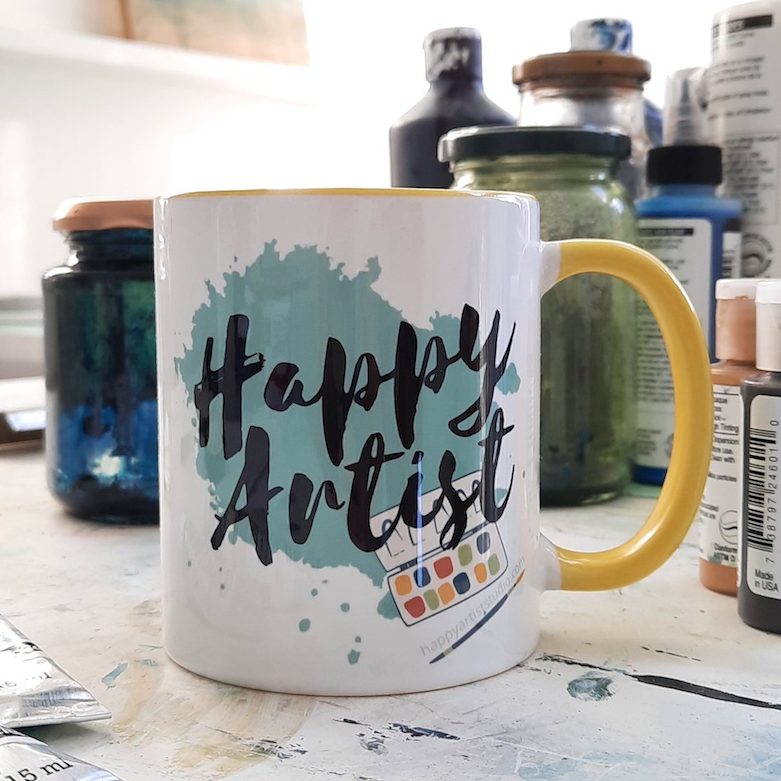

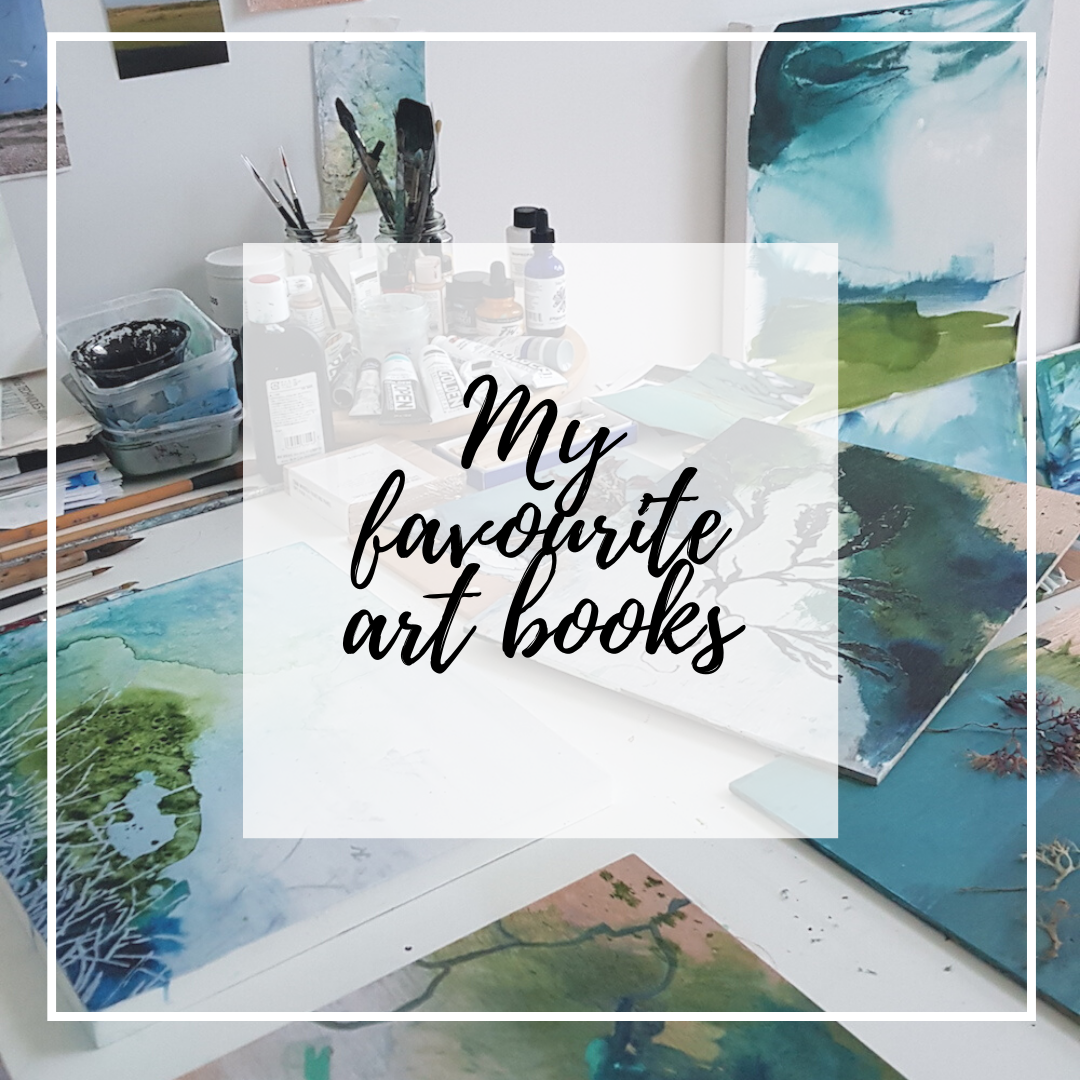
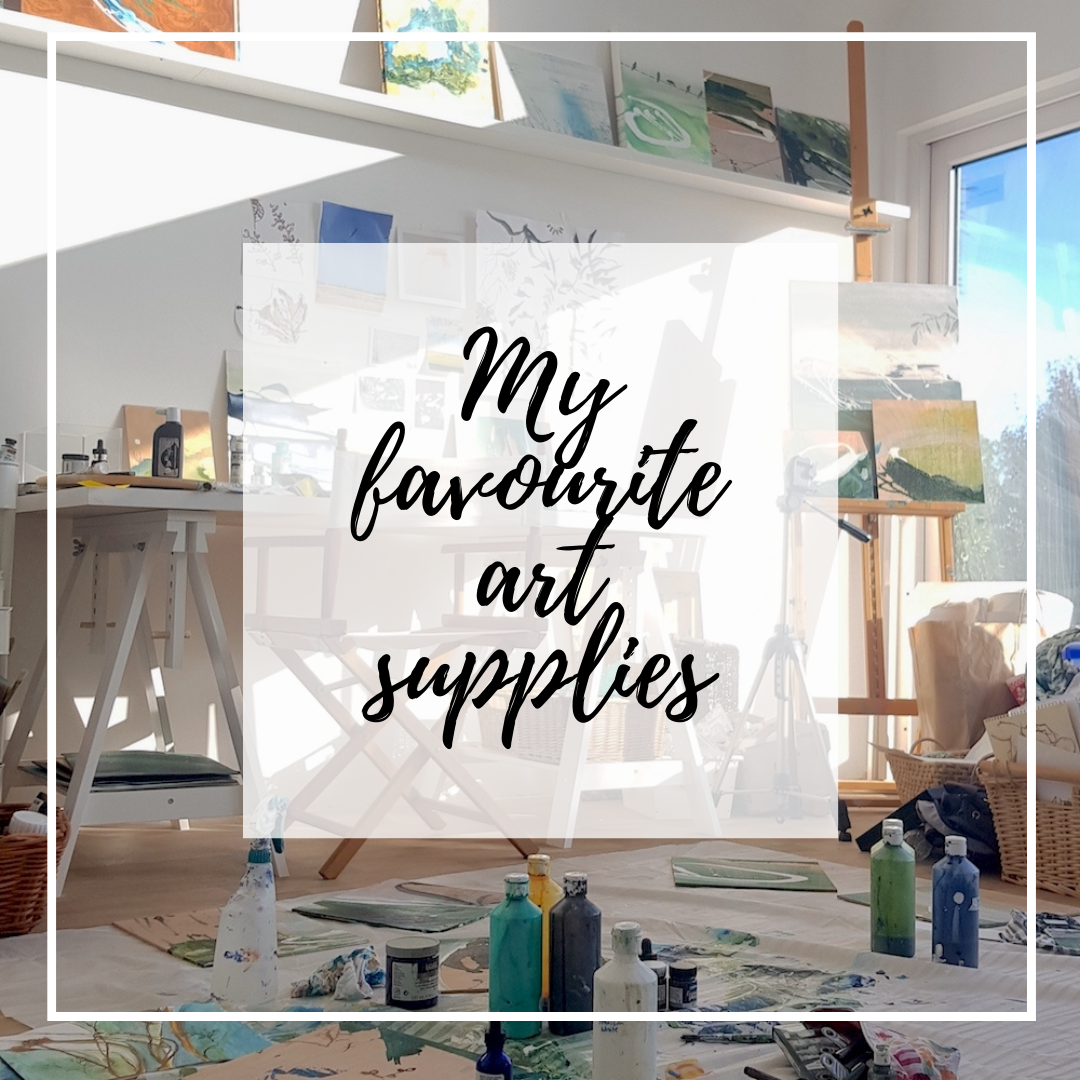
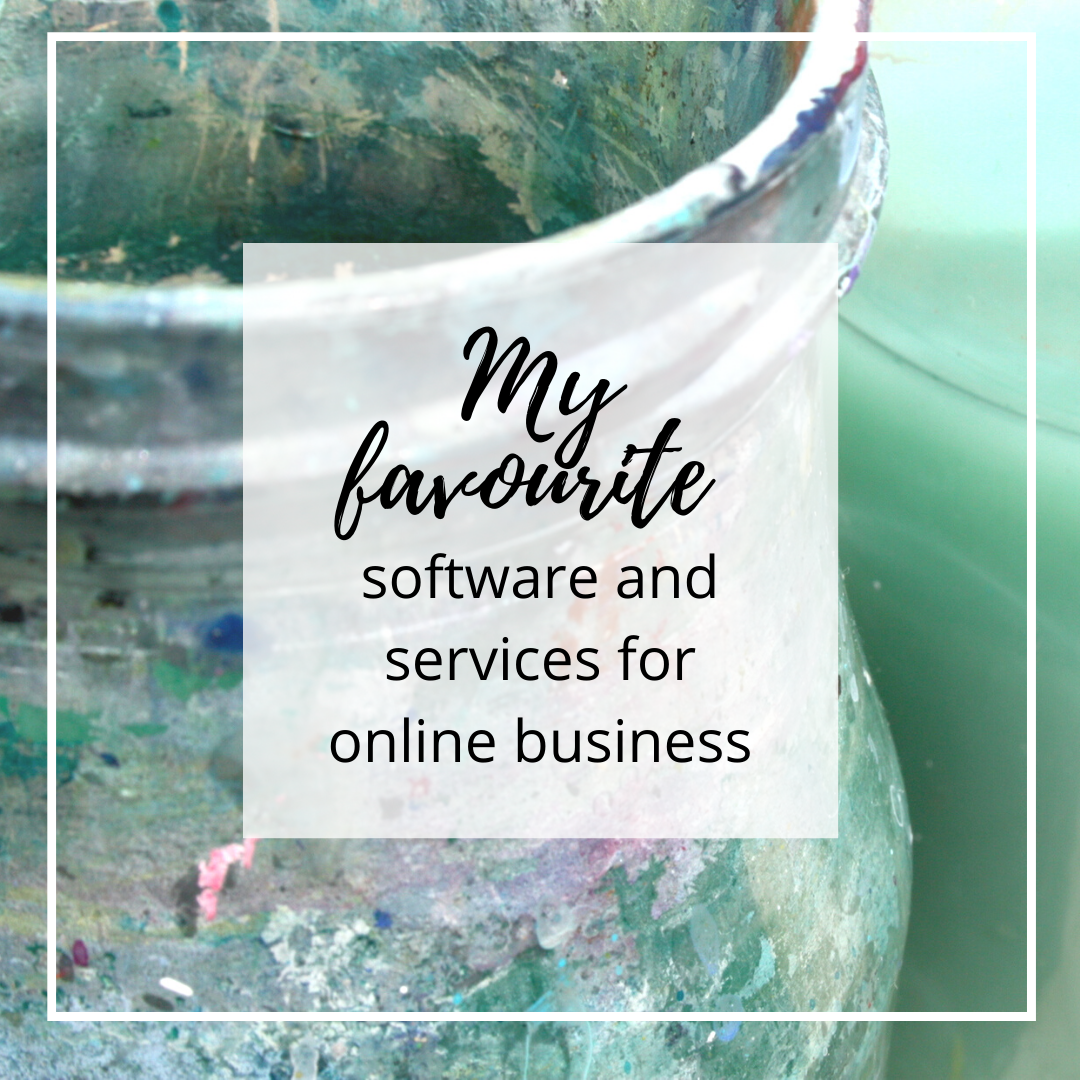
Excellent tips and reminders, Tara! It’s easy to forget, sometimes… Thanks for this post!
You’re welcome Joana! Glad it was helpful and good to see you here. 🙂
Many thanks been struggling what to
Paint next just need this answer
Great ideas – thanks! I’ve tried drawing with my pencil attached to a bamboo stick but it never occurred to me to try it with paint brushes so I can’t wait to try this out 🙂
Great thinking Kerri! Charcoal works too, and marker pens, and probably all sorts of other things…. 🙂
Im not a painter but a fine art photographer but some of these tips do apply also to photography or any form of art. Thank you!
Absolutely! Glad you found it helpful Karolina!
Tara thanks so much for these ideas. I have been so caught up in doing my paintings well and “right” that I had completely lost the joy of painting and have let my easel stand unused with a partial and in satisfying painting waiting to be finished for two months! I will try all of these loosening up techniques. At the very least I will have fun and experience a major change I bow I paint!,????????????????
Grace I’m so happy to hear this and hope it helps you free up to paint with joy and abandon once again. 🙂
I can’t wait to use these ideas to loosen up my artwork. I like to do my art blindfolded to get a loose finish
Oh blindfolded! Nice idea!
Thank you <3
Much appreciation for the reminders
You’re most welcome!
So glad I have found you Another ” wake up ” call
I have been in a ‘rut’ for awhile and couldn’t put my finger to it, to say nothing of putting my brush to paper. It is interesting to read your note that technology can get in the way. I was so tied up at getting into my e-mails and such first thing in the morning that I totally lost my painting touch. Bad eh? Before I came upon your suggestion, I had figured out my problem and now have some incentive to ‘get back at it’ thanks for the push.
Hi Dawn – technology can definitely block the flow! Just as it can help it along. 😉 Happy to hear you’ve found your way back!
It’s time for me to loosen up my painting. After more a decade of doing realistics oil painting, like landscapes – old house and barn etc… from what we call here (Quebec, Canada) Old Europe, i can ear my inner voice shouting at me . So like i said….It’s time !
Sorry for my bad english – i’m a canadian french
Yay! Go for it! It can feel like a bit of a shock to the system at first, but worth persevering!
I started out looking up Leonid Pasternek and found you. Great Ideas for being loose, one thing I definitely am not. I love impressionism but can’t get anywhere near it. Now I’ll try again.
Glad you found something helpful here Beverly!
I named my style Photo-surrealism. Since I work with oils, I sometimes stretch my own canvas. Textured abstracts are a fun way to waste time, experiment with color and applicators, and sometimes get rid of other scraps that you can’t bear to throw away. You can make a specific picture, like tissues for clouds, sand or dirt for background, and grass in the foreground. One that was sold before it was half finished was a Dream Catcher made with scrap yarn and a piece of crochet lace Ripped and reworked until the string was fuzzy before I conquered the pattern. Sometime try watering down good ol’ Elmer’s school glue and draping different textures of cloth over the canvas however you think looks cool, then randomly sprinkle other cool things like leaves, feathers, dryer sheets, dirt, rice, whatever you have on hand that inspires you, let it all dry, gesso over, and see what happens when the colors go on. Hope this inspired someone!
Love the experimental attitude you have here Lisa!
Thank you Tara
Oh what Fun ! What wonderful ideas…I can hardly wait to try all of them …have always disliked my “tight” style and can’t seem to do anything different Thank you ! 🙂
Thanks for this. Recently I have been experimenting once again with moving in the direction of painting looser. I will read this again.
So glad it was helpful Tracy!